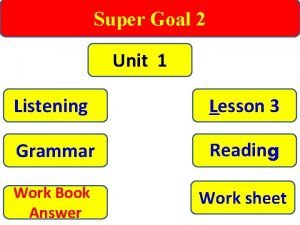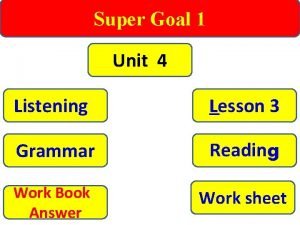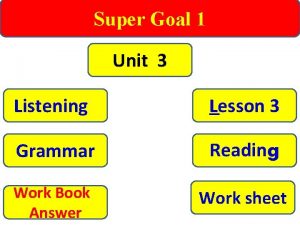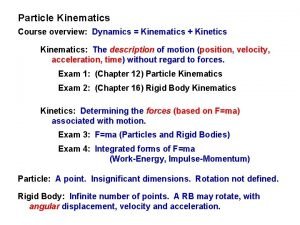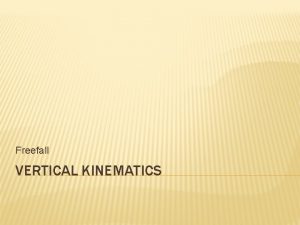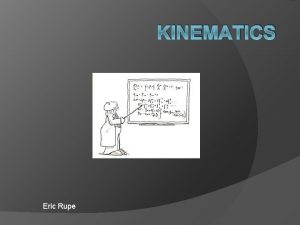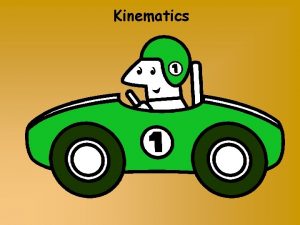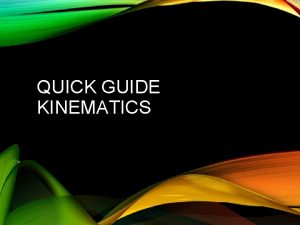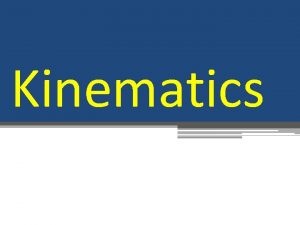Date 8132018 Unit 1 Kinematics Learning Goal Analyze








- Slides: 8

Date: 8/13/2018 Unit 1: Kinematics Learning Goal: Analyze relationships between forces and motion. AP Physics 1 - Ms. Kohler Warm up: A train slowly accelerates leaving a station from 0 m/s to 10 m/s in 8 s. Once out of the station the train accelerates at the same rate for 14 s. What is the final velocity of the train? No, you DO NOT have a reflection today.

Date: 8/13/2018 Unit 1: Kinematics Learning Goal: Analyze relationships between forces and motion. AP Physics 1 - Ms. Kohler

Date: 8/13/2018 Unit 1: Kinematics Learning Goal: Analyze relationships between forces and motion. AP Physics 1 - Ms. Kohler

Date: 8/13/2018 Unit 1: Kinematics Learning Goal: Analyze relationships between forces and motion. AP Physics 1 - Ms. Kohler Visualizing Velocity and Acceleration: • What is happening to this object: Velocity: Acceleration: • What about this one? Velocity: Acceleration:

Date: 8/13/2018 Unit 1: Kinematics Learning Goal: Analyze relationships between forces and motion. AP Physics 1 - Ms. Kohler Solving Acceleration Problems: Lions, like most predators, are capable of very rapid starts. From rest, a lion can sustain an acceleration of 9. 5 m/s 2 for up to one second. How much time does it take a lion to go from rest to a typical recreational runner’s top speed of 10 mph? PREPARE We can start by converting to SI units. The speed the lion must reach is The lion can accelerate at 9. 5 m/s 2, changing its speed by 9. 5 m/s per second, for only 1. 0 s—long enough to reach 9. 5 m/s. It will take the lion less than 1. 0 s to reach 4. 5 m/s, so we can use ax = 9. 5 m/s 2 in our solution.

Date: 8/13/2018 Unit 1: Kinematics Learning Goal: Analyze relationships between forces and motion. AP Physics 1 - Ms. Kohler Solving Acceleration Problems Cont’d: SOLVE We know the acceleration and the desired change in velocity, so we can rearrange Equation 2. 8 to find the time: ASSESS The lion changes its speed by 9. 5 meters per second in one second. So it’s reasonable (if a bit intimidating) that it will reach 4. 5 m/s in just under half a second.

Date: 8/13/2018 Unit 1: Kinematics Learning Goal: Analyze relationships between forces and motion. AP Physics 1 - Ms. Kohler The motion diagram shows a particle that is slowing down. The sign of the position x and the sign of the velocity vx are: 1. Position is positive, velocity is positive. 2. Position is positive, velocity is negative. 3. Position is negative, velocity is positive. 4. Position is negative, velocity is negative.

Date: 8/13/2018 Unit 1: Kinematics Learning Goal: Analyze relationships between forces and motion. AP Physics 1 - Ms. Kohler The motion diagram shows a particle that is slowing down. The sign of the acceleration ax is: 1. Acceleration is positive. 2. Acceleration is negative.





